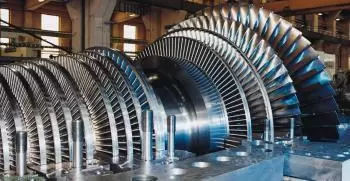
We define mechanical energy as the ability to produce mechanical work that a body possesses due to its mechanical origins, such as its position or speed.
There are two types of mechanical energy which are:
-
Kinetic energy is the energy of motion. All moving objects have kinetic energy.
-
Potential energy is the energy that an object can store energy as a result of its position. This stored energy of position is referred to as potential energy.
The mechanical energy of a body is the sum of the potential and kinetic energy.
The principle of conservation of mechanical energy relates to both energies. According to it, the sum of the kinetic and potential energy of a body remains constant. Mechanical energy is constant if we do not take into account external forces such as frictional ones.
Energy is the ability of a person or an object to do work or to cause a change.
Kinetic energy
Kinetic energy is a form of energy, which has a body in motion due to mass inertia.
Kinetic energy depends on the mass and the speed of the body. Also, the kinetic energy of a moving body is equal to the work required to bring the body from rest to its state.
Two types are distinguished:
-
Translational kinetic energy, in which the object moves from one point to another. It applies whether or not the force acts in a straight line.
-
Rotational kinetic energy, in which the object rotates on itself.
In an atomic view, thermal energy is the kinetic energy of the particles in the material.
Potential energy
Potential energy is the work that an object can do as a result of the object's state. This state can be the location in a force field (for example, gravity) or the object’s internal configuration.
The magnitude of the potential energy is not defined by itself. Only the difference in size has been determined.
There are different types:
-
Elastic potential energy, which depends on the energy stored inside it (for example, a spring).
-
Gravitational potential energy, which depends on gravity and, therefore, on height.
-
Electric potential energy results from conservative Coulomb forces and is associated with the configuration of a particular set of point charges.
-
Chemical potential energy, when it depends on its chemical composition.
-
Thermal potential energy is the potential energy at the atomic levels that can turn into thermal kinetic energy or related forms of energy. The combination of thermal potential energy and thermal kinetic energy is the internal energy of an object.
Examples of mechanical energy
Currently, there are many examples:
-
A falling ball. If we hold a ball with our hand it has potential energy and it has no kinetic energy. If we stop holding the ball, it will begin to gain speed and lose altitude. What is the same, increases the kinetic energy and decreases the potential energy.
-
An electric engine converts electrical energy into mechanical energy.
-
A generator converts mechanical energy into electricity. It is the same case as the electric motor but in the opposite direction.
-
A hydroelectric power station (hydropower) harnesses the potential energy of the water at the top. When the water falls, the potential energy becomes kinetic.
-
A car engine gets mechanical energy from chemical energy by burning fuel.
-
In wind energy, the mills take advantage of the kinetic energy of the air molecules to rotate. Its energy is transferred to the turbine.